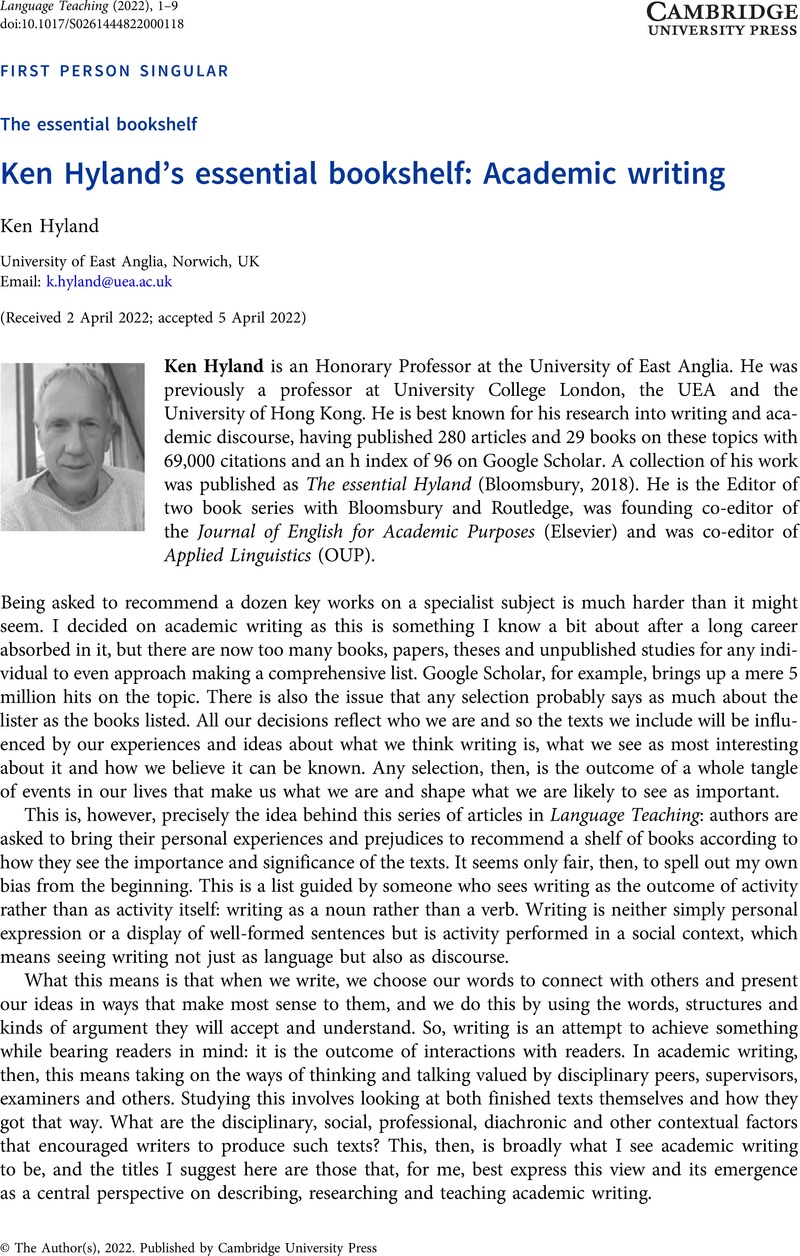Crossref Citations
This article has been cited by the following publications. This list is generated based on data provided by Crossref.
Liu, Luda
Yuan, Yue
and
Du, Zhongquan
2023.
Discoursing disciplinarity: A bibliometric analysis of published research in the past 30 years.
Journal of English for Academic Purposes,
Vol. 66,
Issue. ,
p.
101317.






